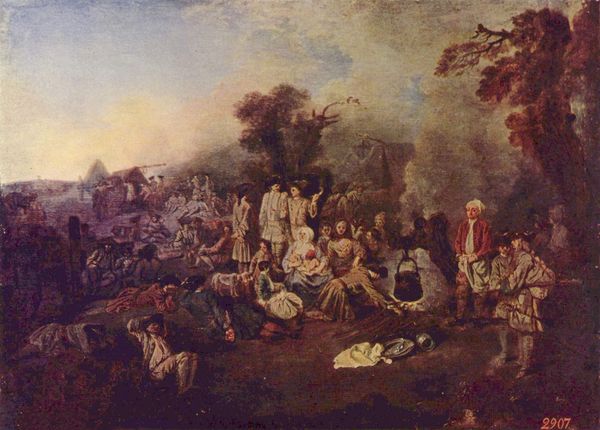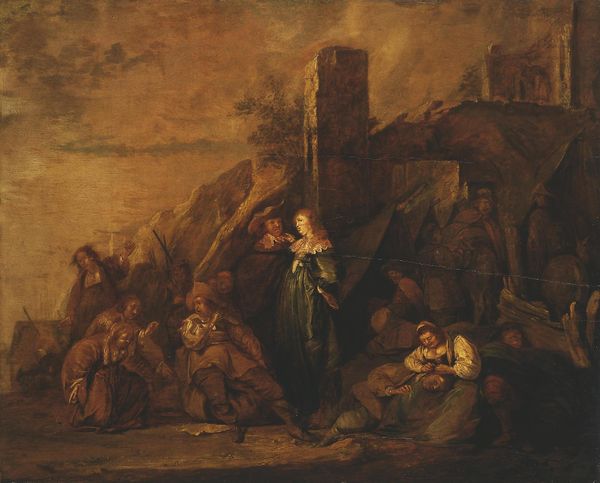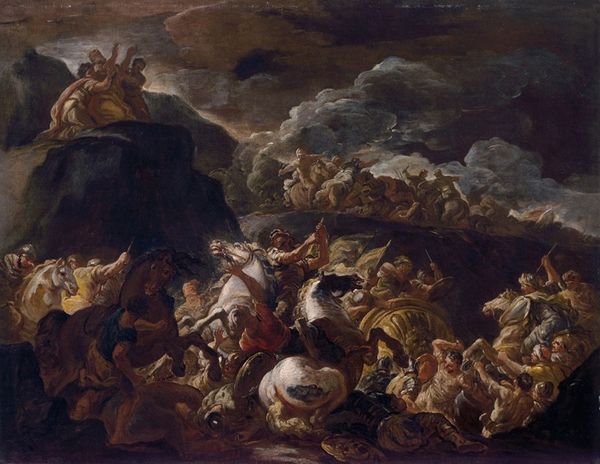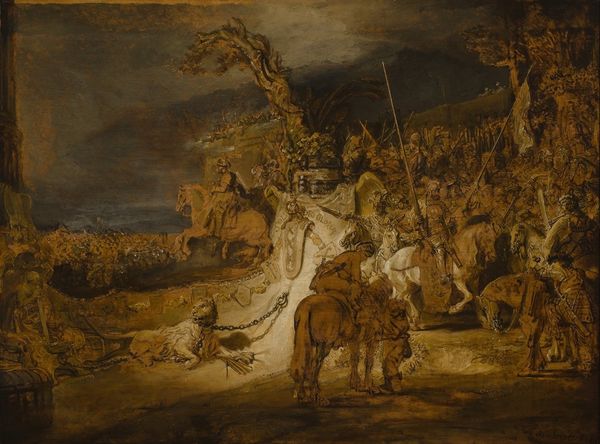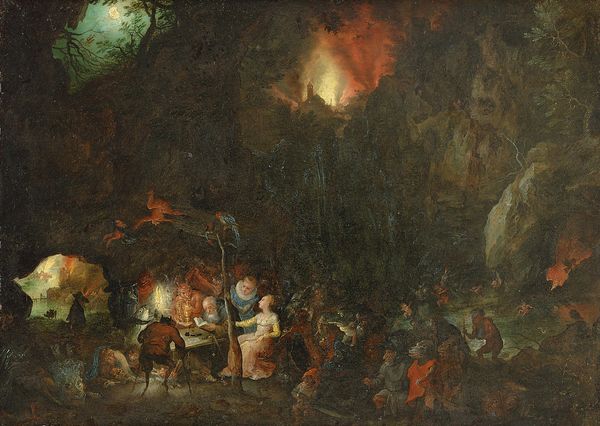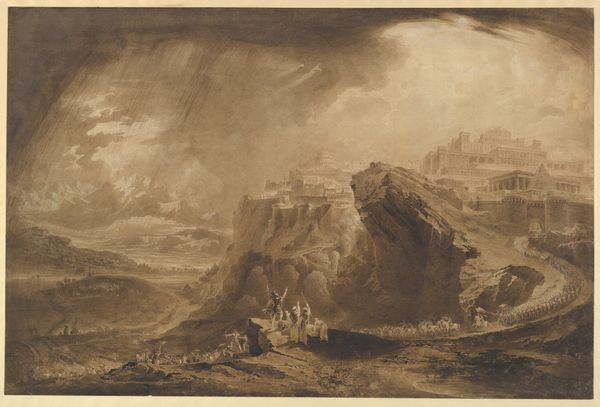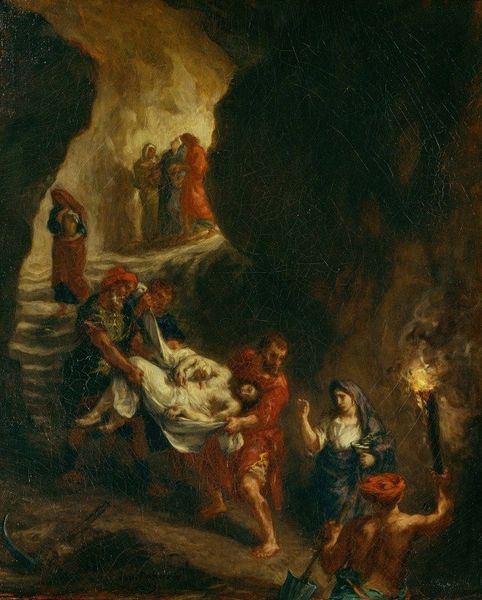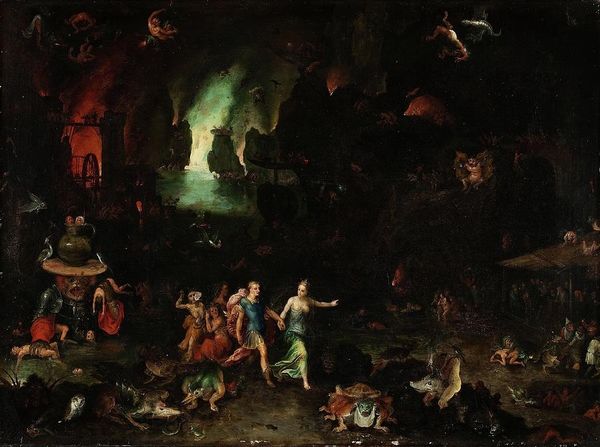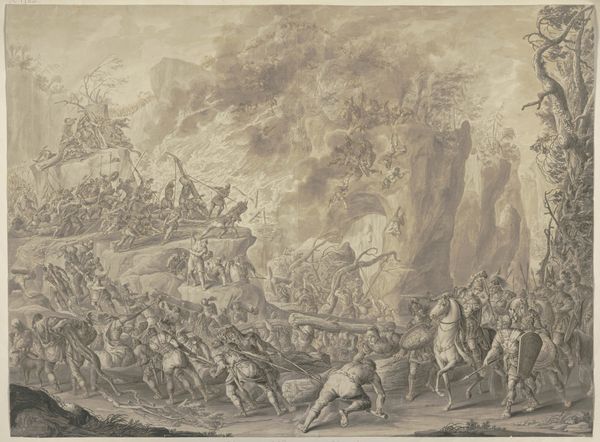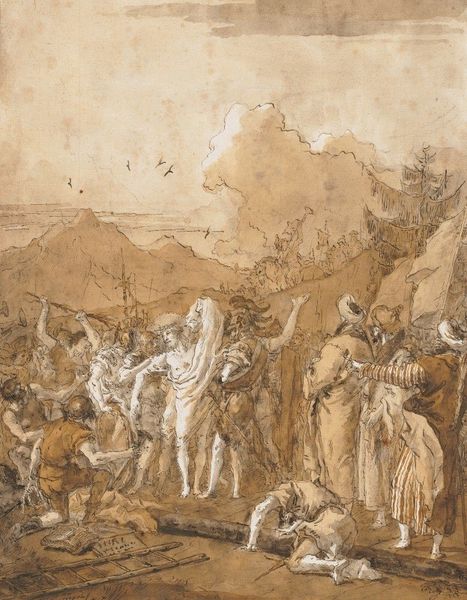
oil-paint
#
baroque
#
oil-paint
#
landscape
#
charcoal drawing
#
figuration
#
oil painting
#
history-painting
#
charcoal
#
christ
Dimensions: 62 x 82 cm
Copyright: Public domain
Curator: Immediately striking. Such intense chiaroscuro; it guides the eye so expertly, doesn't it? All the gazes converge…it's masterfully staged. Editor: Indeed. We’re looking at Rembrandt van Rijn's "John the Baptist Preaching," dating from about 1635. Currently, it resides at the Gemäldegalerie in Berlin. It's rendered in oil on canvas. Curator: The composition… it’s fascinating how the spatial organization seems almost theatrical, directing attention both horizontally across the multitude of figures and vertically toward that architectural element—almost like a stage prop! It evokes a palpable sense of concentrated energy. Editor: That concentrated energy, perhaps, reflects the changing social dynamics of the period. During Rembrandt's time, religious and political structures were under scrutiny. History paintings such as these became spaces to debate morality and public life. John the Baptist, known for speaking truth to power, surely resonated in that socio-political context. Curator: Absolutely, and formally speaking, that limited palette enhances this feeling. There’s this wonderful spectrum—ranging from almost translucent ochre to deep browns. It is less about literal description, and more about creating the right mood. What purpose do you discern for that… shadowy depth at the painting's borders? Is this device perhaps a comment upon something? Editor: I'd wager those obscured edges serve less as commentary, and more as strategic compositional tools, creating the sense of being immersed, like bearing witness within a burgeoning spiritual awakening. Art during the baroque, and particularly historical scenes, could elevate biblical tales. These narratives encouraged both the artist and viewer to engage personally with history. Curator: I concur. A painting where chiaroscuro is not merely technique but active form. We seem positioned as members of the crowd... Editor: To step back and consider Rembrandt’s context really enriches our experience of its striking formal aspects. Curator: It really does make you wonder about the kind of impact Rembrandt wanted to make when crafting those dark corners, those piercing glimmers, for audiences of his time. Editor: Precisely. Both as a moving historical artwork, and carefully arranged composition, it speaks loudly to history as well as the structure of paintings themselves.
Comments
No comments
Be the first to comment and join the conversation on the ultimate creative platform.
